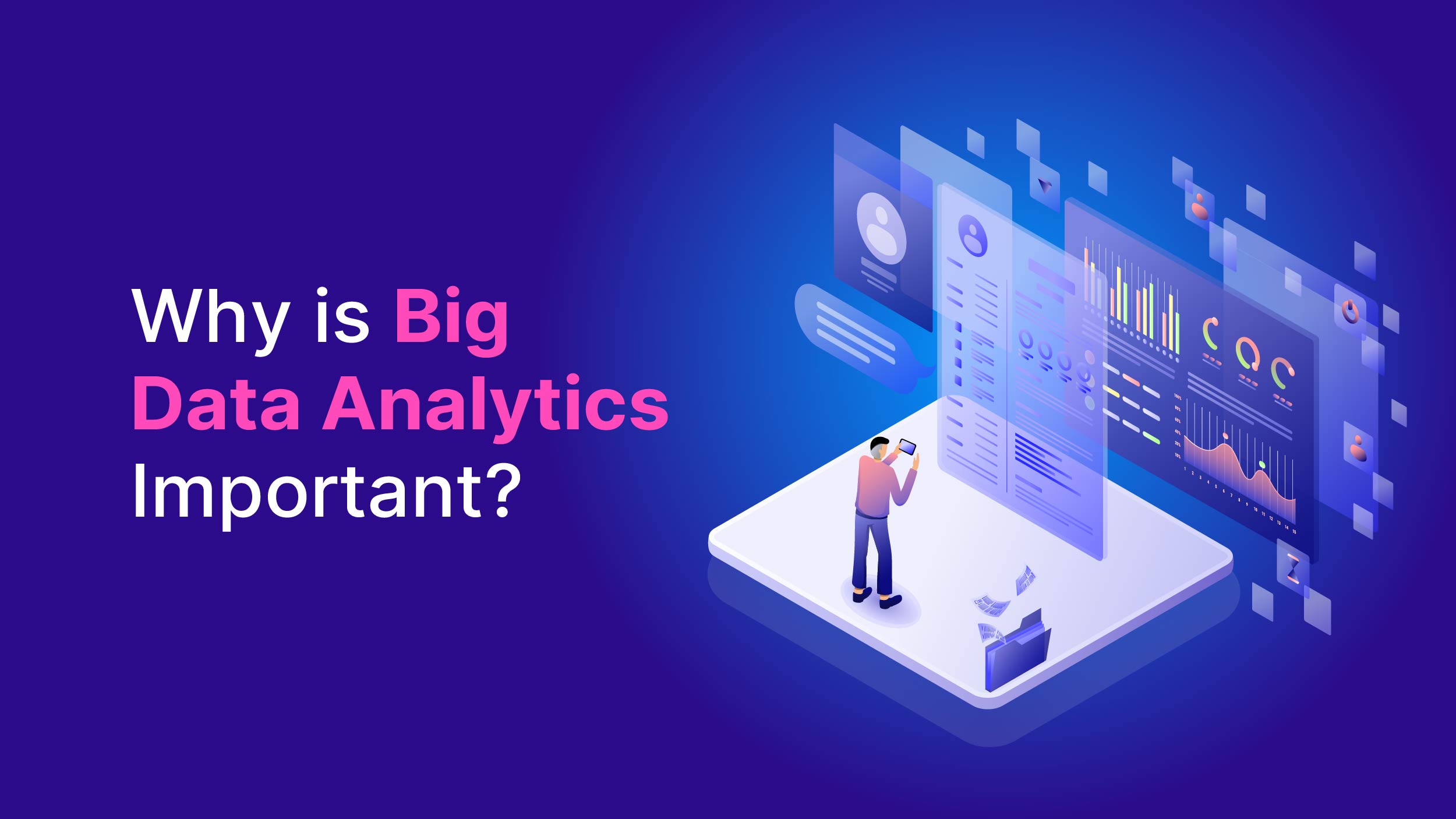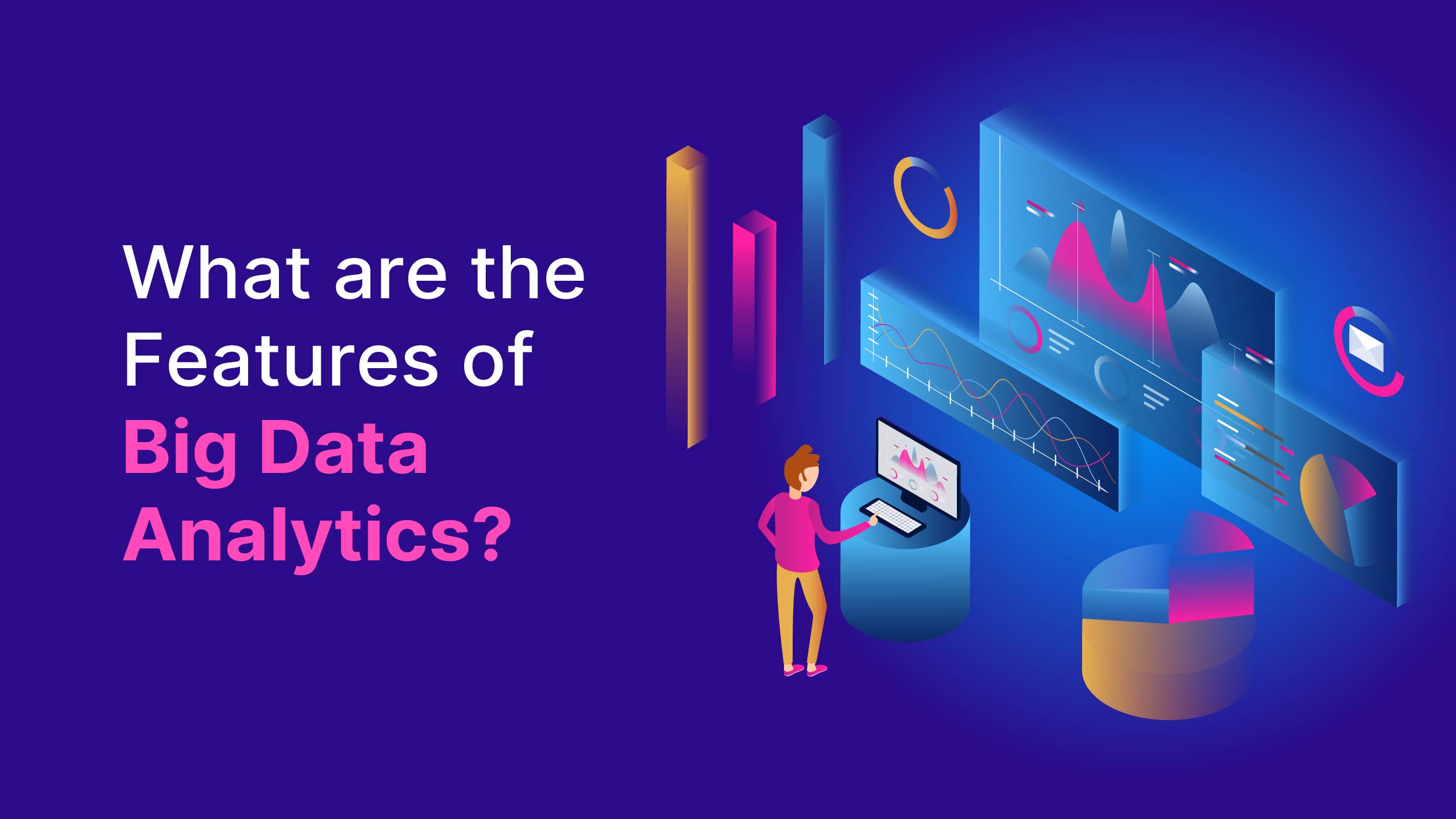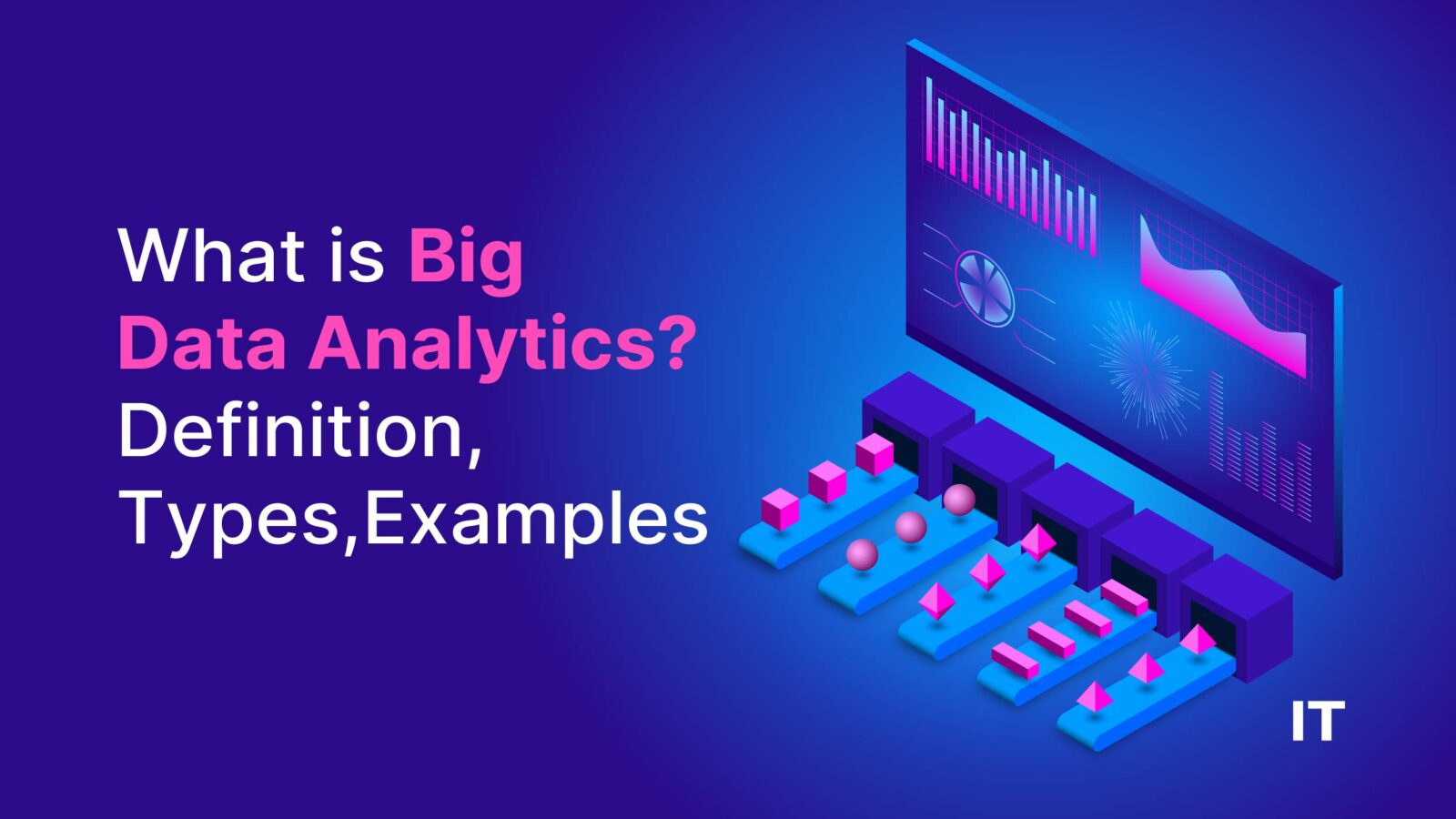In this era of massive data generation, businesses are increasingly turning to big data analytics to uncover valuable insights and drive data-driven decision-making. According to Statitsa, the big data analytics market is anticipated to hit a valuation of 650 billion dollars by 2029.
This billion-dollar industry involves meaningful information from large and complex datasets using advanced analytical techniques. Read on to know more about it.
What is Big Data Analytics?
Big data analytics refers to the process of examining large and diverse sets of data, known as big data, to uncover valuable insights and information. It involves analyzing data from various sources, such as eCommerce, social media, mobile devices, and the Internet of Things (IoT), to identify hidden patterns, correlations, market trends, and customer preferences.
By leveraging advanced analytics techniques, organizations can make informed business decisions, improve processes, and drive profitability.
Why is Big Data Analytics Important?
 Big data analytics is important for several reasons:
Big data analytics is important for several reasons:
- Data-driven decision-making: Big data analytics enables organizations to make informed decisions based on insights derived from large and diverse datasets. By analyzing patterns, trends, and correlations within the data, businesses can identify opportunities, mitigate risks, and optimize their strategies.
- Improved operational efficiency: It helps organizations streamline their operations by identifying inefficiencies, bottlenecks, and areas for improvement. By analyzing large volumes of data, businesses can optimize processes, reduce costs, and enhance productivity.
- Enhanced customer understanding: It provides valuable insights into customer behavior, preferences, and needs. By analyzing customer data, businesses can personalize their offerings, improve customer experiences, and tailor their marketing strategies to target specific segments effectively.
- Market and trend analysis: It enables businesses to analyze market trends, competitor activities, and consumer sentiment. By understanding market dynamics, organizations can identify emerging trends, adapt their strategies, and stay ahead of the competition.
- Risk management and fraud detection: It also helps organizations identify and mitigate risks. By analyzing large datasets, businesses can detect anomalies, patterns of fraudulent behavior, and potential security threats, enabling them to take proactive measures to protect their assets and customers.
- Product and service innovation: It offers insights that can drive innovation and the development of new products and services. By understanding customer needs and preferences, businesses can identify gaps in the market and create offerings that meet evolving demands.
Also Read: The Stories of Big Data Analytics Beyond Numbers
What Does a Big Data Analyst Do?
A big data analyst is tasked with digging into large and intricate datasets to uncover valuable insights and information. They dive into market trends, gather data, crunch numbers using different tools and methods, and then package their discoveries into easy-to-understand formats like graphs and reports. Essentially, they work with data to solve specific business challenges and guide organizations in making informed decisions.
What are the Features of Big Data Analytics?
 Big data analytics isn’t just one process; it’s a collection of numerous business-related procedures that occasionally involve data scientists, business management, and production teams.
Big data analytics isn’t just one process; it’s a collection of numerous business-related procedures that occasionally involve data scientists, business management, and production teams.
Technologies are needed for data scientists to speed up and enhance the process. The key features of big data analytics are:
1. Data wrangling and preparation
Processes for data preparation should be used once during the project before using any iterative models. Alternatively, data wrangling is done during iterative analysis and model development. Feature engineering is when this idea first appeared.
2. Data Exploration
The initial step in data analysis is called data exploration, and it comprises examining and visualizing data to draw conclusions right away or to spot trends or regions that need further investigation. Users may better understand the big picture by using interactive dashboards and point-and-click data exploration to acquire insights more quickly.
3. Scalability
To scale up, or vertically scale, a system, a speedier server with more powerful processors and memory is required. Even if this approach uses less energy and network hardware, especially if further expansion is anticipated, it might only be a temporary solution to many of the problems with big data analytics systems.
4. Version control
Version control, often known as source control, is the process of documenting and managing modifications to software code. Version control systems are digital tools that enable software development teams to keep track of changes to source code over time.
5. Data Governance
Data governance is the process of making sure that data is dependable, accurate, available, and usable. It describes the actions people must take, the laws they must follow, and the supporting technology throughout the data life cycle.
What are the 4 Types of Big Data Analytics?
Four primary types of big data analytics guide various business decisions.
- Descriptive analytics: Descriptive analytics deals with data that is easy to comprehend and interpret. This information aids in creating reports and visualizing data that can outline company expenditures and marketing strategies.
Example: In a restaurant chain, descriptive analytics helped identify peak hours and popular menu items, allowing managers to streamline operations and optimize the customer experience.
- Diagnostics analytics: Diagnostics analytics assists in understanding the root causes behind an issue. Utilizing big data tools, users can dig into data to dissect problems and prevent their recurrence in the future.
Example: In a software company, diagnostics analytics revealed that a recent product update caused a significant increase in customer support tickets, prompting developers to roll back the changes and issue a fix.
- Predictive analytics: Predictive analytics harnesses historical and current data to make forecasts. Leveraging artificial intelligence and machine learning, users analyze data to anticipate market trends and customer behavior.
Example: A transportation company uses predictive analytics to forecast demand for ride-sharing services during peak hours and special events, allowing them to allocate resources efficiently.
- Prescriptive analytics: Prescriptive analytics offers solutions to problems, relying on AI and machine learning to gather and analyze data for risk management.
Example: In a retail chain, prescriptive analytics suggests optimal pricing strategies based on consumer behavior, inventory levels, and competitor pricing, maximizing profitability while minimizing risk.
Use Cases of Big Data Analytics
Big data analytics finds numerous applications across various domains, empowering organizations to leverage data-driven insights for strategic decision-making and operational optimization. Here are some examples:
- Customer Acquisition and Retention: By harnessing consumer data, organizations can enhance their marketing efforts to attract and retain customers effectively. Personalization engines utilized by platforms like Amazon, Netflix, and Spotify leverage data trends to improve customer experiences and foster loyalty.
- Targeted Advertising: Utilizing personalization data derived from past purchases, interaction patterns, and product page viewing histories, organizations can develop targeted ad campaigns tailored to individual users, thereby enhancing engagement and conversion rates.
- Product Development: Big data analytics provides valuable insights to organizations regarding product viability, development decisions, and progress measurement. By analyzing customer feedback and market trends, businesses can refine their product offerings to better align with customer needs and preferences.
- Price Optimization: Retailers leverage pricing models that utilize data from various sources to optimize pricing strategies, maximizing revenues while remaining competitive in the market.
- Supply Chain and Channel Analytics: Predictive analytical models aid in preemptive replenishment, optimization of business-to-business supplier networks, inventory management, route optimizations, and proactive notification of potential delivery delays, enhancing overall supply chain efficiency.
- Risk Management: Big data analytics identifies emerging risks through data pattern analysis, enabling organizations to implement effective risk management strategies and mitigate potential threats.
- Enhanced Decision-Making: Insights extracted from relevant data empower business users to make informed decisions promptly, driving organizational agility and effectiveness in responding to evolving market dynamics.
5 Best Big Data Analytics Tools
Some of the main big data analytics solutions are listed below:
Hadoop
Hadoop is an open-source framework that facilitates the storage and processing of large datasets on commodity hardware clusters. It’s a crucial component for any big data project due to its capability to handle enormous amounts of both structured and unstructured data effectively.
In addition, non-relational data management systems like NoSQL databases are ideal for managing significant volumes of unstructured data as they do not require a predefined schema. These databases support diverse data models, making them more flexible and adaptable. As a result, they are often referred to as “not simply SQL” databases.
Spark
Spark is a free and open-source cluster computing platform equipped with implicit data parallelism and fault tolerance capabilities. It allows users to program entire clusters effortlessly. With Spark, users can perform batch and stream processing for swift computations.
Tableau
Tableau stands out as an advanced data analytics tool that empowers users to develop, collaborate on, analyze, and share insights from big data. Its features include self-service visual analysis, enabling users to explore vast datasets efficiently and communicate their discoveries with team members swiftly.
RapidMiner
RapidMiner is a specialized platform designed for data analysts who are keen on integrating machine learning and simplifying the deployment of predictive models. It is an open-source software that is available for free and is mainly used for text and data mining purposes.
Microsoft Azure
Microsoft Azure is a platform that provides cloud computing services to the public. It offers various services such as data analytics, storage, and networking. Within its offerings, there are both free and paid editions of big data cloud services available. To effectively handle big data workloads, a business typically needs an enterprise-scale cluster.
End Note
Big data analytics enables organizations to optimize processes, enhance customer experiences, identify market trends, and mitigate risks. As technology continues to advance, the importance of this technological advancement will only grow, allowing businesses to stay agile, competitive, and successful in an increasingly data-centric world. Embracing data analytics is not just a choice, but a necessity for organizations aspiring to thrive in the digital age.

































